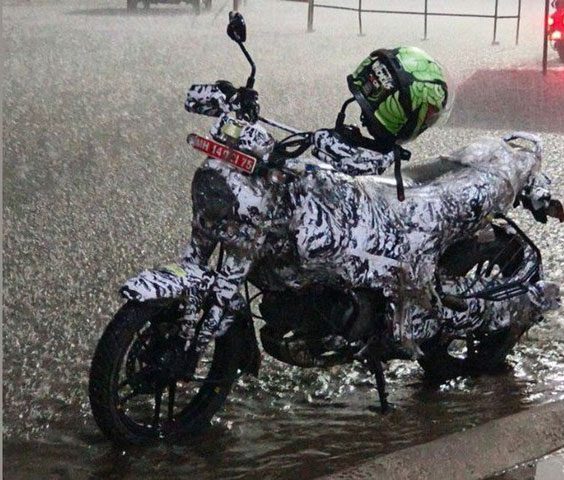CNG (Compressed Natural Gas) motorcycles are vehicles that use compressed natural gas as fuel instead of traditional gasoline. Natural gas is compressed at high pressure and stored in tanks mounted on the vehicle.
Over the years, we have seen various alternatives to gasoline proposed for motorcycle fuel – including steam, hydrogen, water, and batteries. Now, a motorcycle manufacturer is preparing to launch what is considered the world’s first CNG motorcycle.
CNG stands for Compressed Natural Gas, and as the name implies, this energy source “is produced by compressing natural gas to less than 1% of its volume at standard atmospheric pressure.” It can be used as a fuel source for internal combustion engines, where a cylindrical tank supplies gas through a fuel line via a pressure regulator before reaching the combustion chamber to mix with air and ignite via a spark plug.

CNG motorcycles utilize compressed natural gas as fuel instead of gasoline. Natural gas is a cleaner fossil fuel that is more efficient than gasoline and causes less environmental pollution.
Similar to LPG – Liquefied Petroleum Gas – it is often seen as a cleaner and cheaper alternative to gasoline and diesel, and can be installed in buses, trucks, and even cars and three-wheelers. While CNG converters have been available globally for some time, the CNG motorcycle set to launch by India’s Bajaj Auto is believed to be the first production model of its kind in the world.
The prototyping process has been ongoing since at least last year, when the company’s CEO, Rajiv Bajaj, told CNBC-TV18 in a November 2023 interview that they recorded a “75% reduction in carbon monoxide levels” with the CNG prototype compared to gasoline engines, while also noting that CO2 emissions and non-methane hydrocarbons were “almost zero.”

With the development of natural gas refueling infrastructure and technological advancements, CNG motorcycles have the potential to become a popular alternative to gasoline motorcycles in the future.
He also suggested that future owners of this model could expect to “reduce fuel costs by 50 to 65%.” Therefore, there appear to be solid environmental benefits and cost savings when such a motorcycle is launched, and Bajaj Auto’s home country, India, may be the best place for production testing at the moment – where the overall motorcycle market is projected to be worth about $31 billion this year.
At the time of the CNBC-TV18 interview, the company stated that the launch date for this model would be in 2025, but it seems that this timeline has now been revised, with the Times of India reporting an announcement on June 18.
Road testing prototypes appear to have started operating like regular models before being modified to use the new fuel source – the vehicle was camouflaged with an unusually large gas tank in March, reportedly undergoing benchmark testing alongside the Bajaj Platina 110 model.

According to information from Newatlas, this model will feature a 125cc powertrain and a dual fuel setup, alongside potential specifications such as 17-inch wheels wrapped in 80/100 tubeless tires, a semi-digital dashboard, telescopic forks, a single rear shock absorber, and LED headlights.
CNG motorcycles have several advantages over gasoline motorcycles, including:
- More environmentally friendly: Natural gas produces fewer emissions than gasoline, including greenhouse gases like carbon dioxide. This means that CNG motorcycles can help reduce air pollution and climate change.
- More efficient: Natural gas contains more energy than gasoline per unit volume. This means that CNG motorcycles can travel farther with the same amount of fuel compared to gasoline motorcycles.
- Cost savings: Natural gas is generally cheaper than gasoline. This means you can save money when operating a CNG motorcycle.
However, CNG motorcycles also have some disadvantages, including:
- Limited infrastructure: Natural gas refueling stations are not as widespread as gas stations, which can make it difficult to refuel CNG motorcycles.
- Higher vehicle costs: CNG motorcycles typically have a higher price than gasoline motorcycles.
- Heavy gas tanks: Natural gas tanks can be heavy and bulky, affecting the weight and handling of the motorcycle.
- Shorter range: CNG motorcycles often have a shorter range than gasoline motorcycles due to limited gas tank capacity.
Overall, CNG motorcycles present an environmentally friendly and cost-effective alternative to gasoline motorcycles, and they are expected to become a popular mode of transportation in the future. However, to thrive, CNG motorcycles will need investment in the development of CNG refueling infrastructure and efforts to lower vehicle costs.





















































